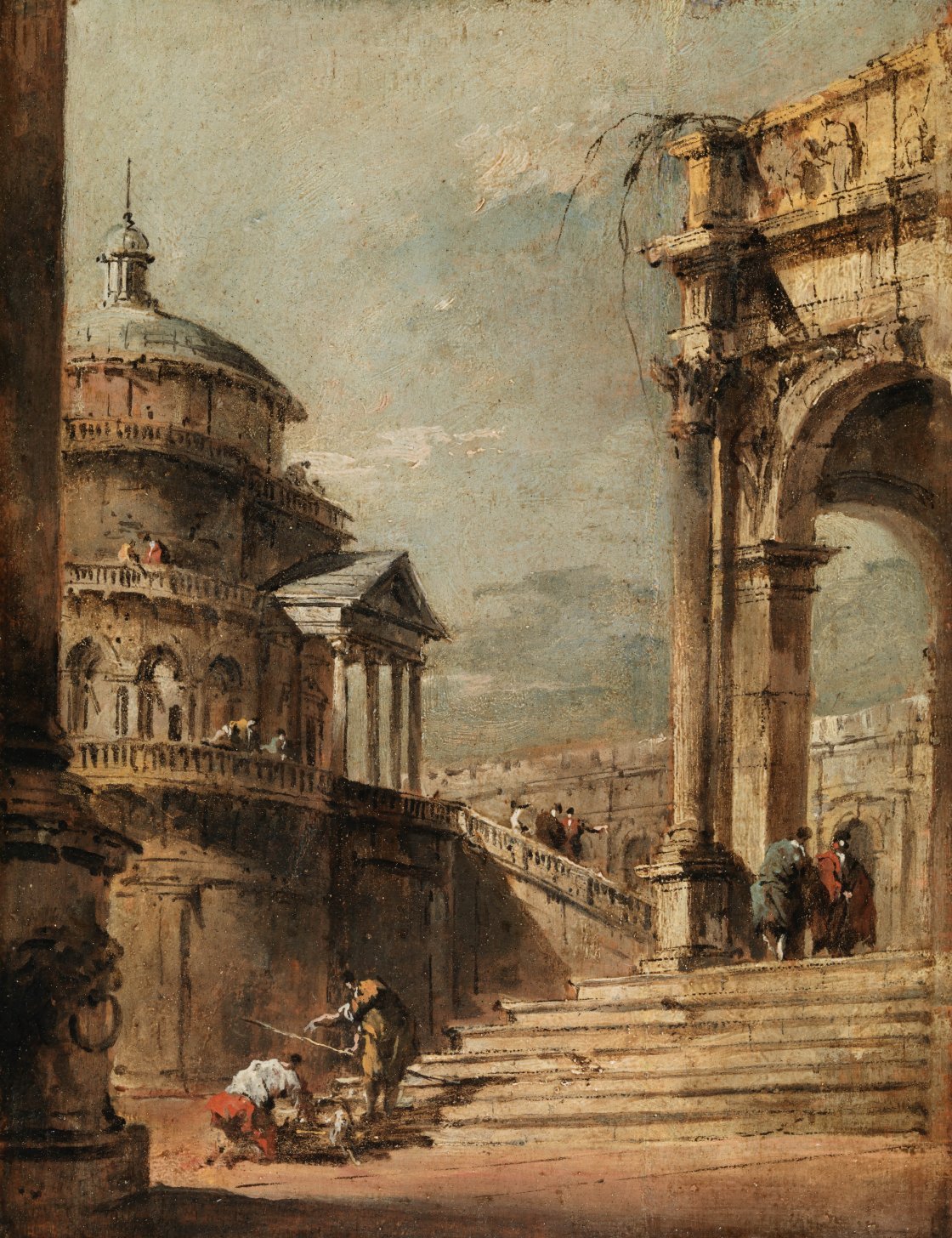Guardi and Venice in the Collection of the Gulbenkian Museum
The group of works by Francesco Guardi belonging to the Calouste Gulbenkian Museum is shown at the Museo Nacional Thyssen-Bornemisza for the first time in their entirety thanks to a collaboration agreement between the two institutions.
With a total of 18 oil paintings and one drawing, Guardi is the best represented artist in the collection assembled by the financier Calouste Sarkis Gulbenkian (1869-1955), which has been displayed since 1969 at the museum in Lisbon that bears his name.
Together with Guardi's paintings, which were acquired between 1907 and 1921, the exhibition includes a drawing by the artist, acquired in 2002, and an oil painting by his son Giacomo. The works date from between 1765 and 1791 and depict iconic locations and monuments in Venice, such as the Rialto Bridge and the Doge's Palace, festivals such as the Ascension, places near to Venice, and various capricci from the end of Guardi’s career.
Born into a family of painters, Francesco Guardi (1712-1793) was trained and worked in the family workshop, instructed by his older brother Gianantonio. From the outset of his career until the late 1750s he was active as a painter of historical and religious subjects in addition to executing frescoes and still lifes. As a mature artist, however, he focused on the production of vedute (urban views) of the city of Venice, following the precedent of Canaletto (1697-1768). Over the following years and after Canaletto's death, Guardi brought a new dynamism to his brushstroke as well as increasing idealisation in his landscapes, becoming the most important vedutista in Venice at the time.
The exhibition is displayed in three rooms of the permanent collection and is divided into two sections: The city and its festivals and Terraferma and the capricci.
It opens with a group of works that function as a chronicle of celebrations and scenes in the city of Venice. Rooms 13 and 14 reveal how Guardi made use of works by Canaletto as a model for these compositions, which he then executed in his own pictorial style with emotion, verve and dynamism.
The festival of the Ascension, one of the most important in the city’s calendar, is depicted in two works, both entitled The Feast of Ascension in the Piazza San Marco (ca. 1775), in which Guardi included iconic elements of the city. The Piazza is animated by numerous figures conveyed with rapid, impastoed strokes of paint that create a play of light and shadow beneath a sky of subtly nuanced tones.
Another example of the artist’s ability to chronicle official ceremonies The Departure of the Bucintoro (ca. 1765-80), a canvas in which Guardi presents a sweeping view of the dock with its most important buildings and the departure of the Doges' galley, the Bucintoro, which is located on the right, identifiable by its red and gold standard.
Regatta on the Grand Canal (ca. 1775) and The Rialto Bridge after the Design by Palladio (ca. 1770) are two works that focus on the Grand Canal but from different viewpoints. In the first canvas Guardi shows the city engaged in the celebration of another festival while in the second he reinterprets the design of Palladio's unbuilt bridge.
The Giudecca Canal with the Church of Santa Marta (ca. 1770-80), Portico with Figures (ca. 1778), The Portico of the Ducal Palace (ca. 1778), Regatta on the Grand Canal Near the Rialto Bridge, (ca. 1780), The Grand Canal at the Rialto Bridge (ca. 1780-90) complete the selection of works displayed in the first two rooms.
The second section, Terraferma and the capricci, is displayed in Room 15. It reveals how Guardi’s use of a loose pictorial technique allowed him to move away from academic models and focus on depicting deteriorating buildings and other aspects not associated with luxury or splendour in paintings of modest locations near Venice.
Image: Francesco Guardi.Architectural Capriccio ca. 1170-1780.
In Capriccio (ca. 1770-80) two fishermen are shown engaged in their work accompanied by a dog. Displayed alongside the painting is the preparatory drawing for the composition, Capriccio with Ruined Roman Arch and a Circular Temple (ca. 1770-80), which reveals some differences in relation to the final work. Guardi’s fluid, sometimes nervous pen stroke not only constructs the space but also evokes what will become the colour in the painting.
The artist's interest in portraying everyday life is also reflected in The Lock Gates at Dolo (ca. 1774-76), a work that focuses on the activity on the banks of the Brenta Canal and the succession of buildings that converge on the horizon with the church of San Rocco. The Island of San Giorgio Maggiore (ca. 1790), a view painted by the artist on several occasions, depicts the side of the church designed by Palladio next to the Benedictine monastery, the oldest religious house in Venice.
Shown alongside these canvases are The Bridge over the Brenta Near the Lock Gates at Dolo (ca. 1770-80), Landscape with Ruins (ca. 1770-80), Architectural Capriccio (ca. 1770-80) and two versions View of the Molo with the Ducal Palace (ca. 1780-90 and ca. 1790).
The exhibition concludes with the oil on canvas Regatta on the Grand Canal Near the Rialto Bridge (ca. 1791) by Guardi’s son Giacomo, and The Bucintoro (ca. 1745-50) by Canaletto, which is on display in Room 17. Belonging to the Thyssen-Bornemisza Collection on deposit with the Museu Nacional d'Art de Catalunya (MNAC), its composition inspired one of the most outstanding works by Francesco Guardi in the exhibition.


